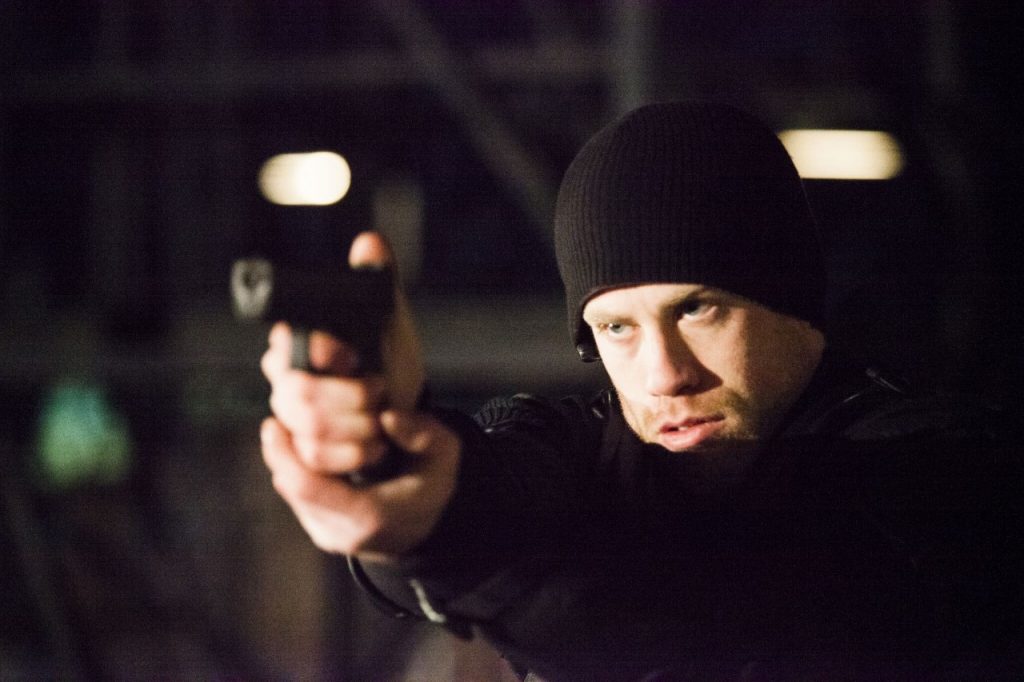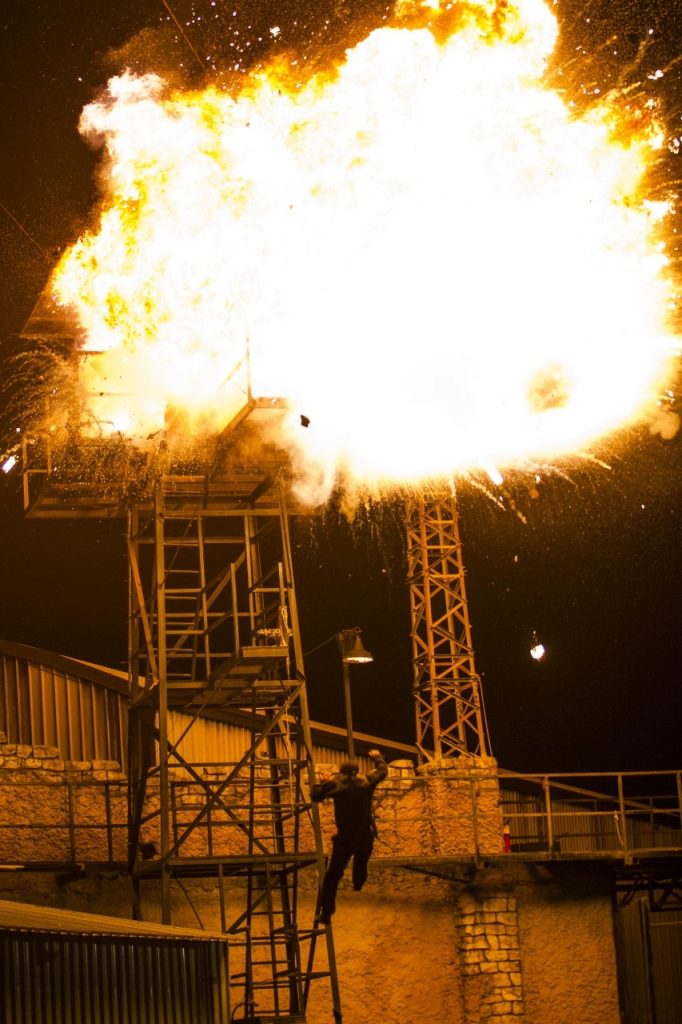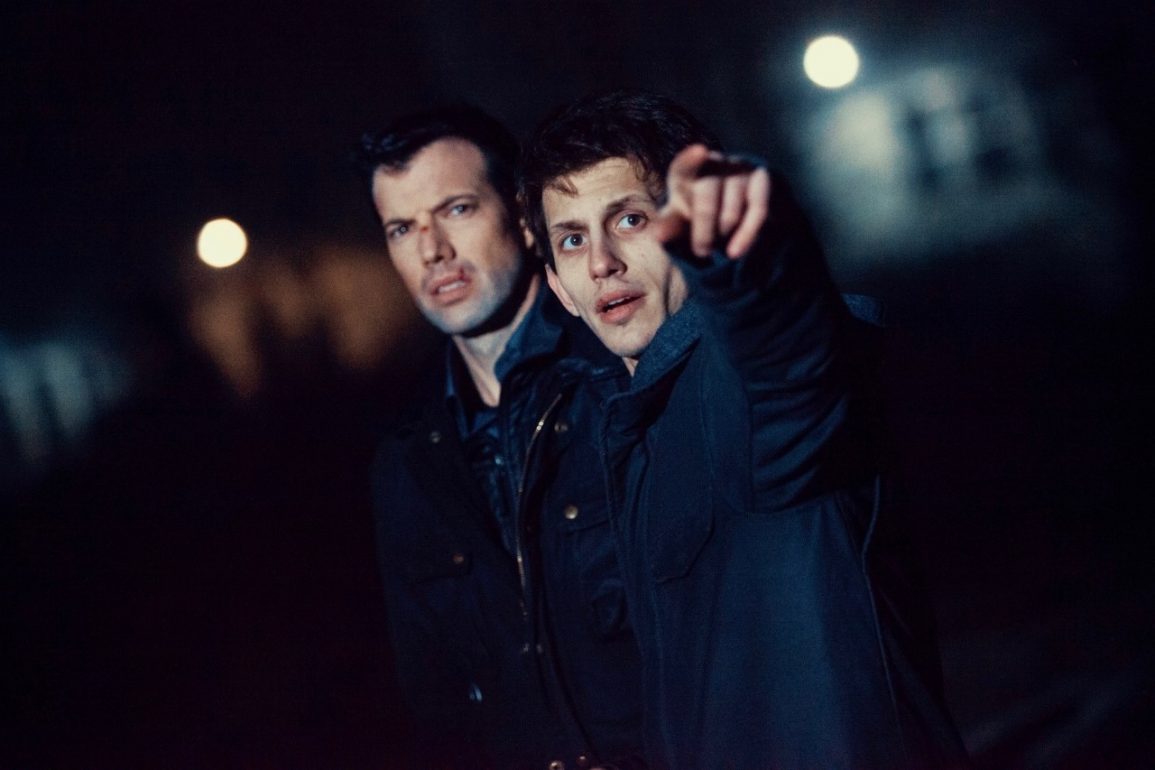“On a structural level, I think there needs to be careful planning in the way you sprinkle action throughout a story“, says Brando Benetton, writer-director of the new action short Nightfire.
By the looks of the socials, it would seem the film’s release has been a long time coming. How long has this journey been for you?
You’re right! I absolutely loved the process, and I think over the last 18 months I’ve truly embraced the concept of “challenging the material,” and whether it’s in the early screenwriting process or the final sound mix of a movie—if a film can be better for the audience it deserves to be better and you should keep working on it until the last moment.
Gradually returning to improve upon something is such a creatively fulfilling experience as you’re never the same filmmaker today than you were two years ago. It’s like having a conversation with your past self in regards to observing filmmaking choices and trying to build on them.
And how much did the script change over the course of the development period? / How do you think its improved?
Believe it or not, the script didn’t drastically evolve over the months simply because we were locked in place with the resources at our disposal. We knew we had locations like a military base (which would be used in the opening sequence), a large stage for a political rally or an abandoned factory. And once we locked in place what the largest set pieces were in the story, we had to commit to begin working out permits, schedules, etc. What was changed was dialogue—co-writer Los Silva did some exceptional work re-writing dialogue for the film, and I’d lie if I didn’t confess that even Dylan Baker himself helped shape some of the most dramatic confrontations towards the end of the movie. It’s team effort.

And why this film? What was it about this one that had you jumping through hoops to tell this particular story?
Assembling the story for us was a creative process unlike most other films. Because of the budget limitations, we were forced to reverse-engineer and weave a story around the resources at our disposal. We wanted the film to carry visual scope and spectacular set pieces, and would lay them out and ask ourselves: “Okay, what is the most honest way to get our characters from here to here, in a way that feels true to their emotional journey?” Movies usually aren’t assembled this way, but ironically, while we were shooting this in northern Italy, Chris McQuarrie and Tom Cruise had a similar creative approach while filming Mission: Impossible – Rogue Nation in the UK. They came up with larger set-pieces and assembled a truly beautiful film—taking limitations and turning them into opportunity.
And is it fair to say 007 was an influence?
You bet. Even before the Mission: Impossible franchise, the 007 stunt sequences and the work of Vic Armstrong and Remy Julienne were a massive influence on me since I was a kid. And even since we shot the movie, I’ve been lucky enough to deepen my understanding of using stunts as a storytelling device—going as far as to meet up with James Bond director John Glen (who directed ALL of the Bond films throughout the ‘80s) to discuss with him the creative process of designing action from the ground up. There’s a deep emotional component in watching good action scenes that fascinates me as an audience member.
Can you talk about the action sequences in the film – did your acts jump head first into doing everything themselves?
On a structural level, I think there needs to be careful planning in the way you sprinkle action throughout a story. Too much in the front, and the movie feels to trail off into dullness. Too much in the back, and audience members may switch the film off before even getting there. Much like the action franchises we mentioned above, there is a reason all spy films open with an action set piece—it’s a promise you are making to the audience, and the establishing the rules of the genre. The same way a musical like La La Land opens with the freeway dance number. Could you imagine if they broke into singing 15 minutes into the movie, and the audience goes: “Wait, what?!”
So I think you’re absolutely right, structure is one of the ways you can have controlled and focused storytelling by hitting the audience with subconscious “marks” and letting them know, on an emotional level, how to track where we are in the story.
Often the midpoint set-pieces seem to be the largest. Mission: Impossible – Rogue Nation has an underground water sequence that evolves into a car chase, that evolves into a motorcycle chase. M:I – Fallout has a truck chase that evolves into a motorcycle chase before becoming a car chase. So even though we shot Nightfire way before either one of these movies came out, we loved the idea of having a midpoint set piece that weaved between multiple kinds of vehicles. It maximizes the variety of locations and kind of action it could offer.
How game was Dylan Baker?
Let me just begin by saying that this movie would not exist without Dylan. Everyone in the cast was exceptional, and endured truly freezing temperatures (we shot it mostly at night in the middle of the Italian winter). But you would not believe it if I told you how committed Dylan was to shooting guns, jumping onto moving vehicles—he even delivered his opening monologue in 30 degree weather in nothing more than a t-shirt. Crammed in a cage for hours. The entire cast and crew gave up their Christmas holidays with their families to make this movie. And that was the ultimate gift to me. No matter how little sleep, or the language barrier between the Italian and the American cast/crew—everyone was there to make this movie the very best it could be.

In terms of weapons, had any of your cast had experience yielding firearms or did some schooling take place before production?
Great question! We had our wonderful Stunt coordinator, Simone Bonelli (who has worked on everything from Guy Ritchie’s The Man from U.N.C.L.E. to the more recent Ben-Hur remake) coaching actors and extras, anyone on set who was handling firearms. There was little time to rehearse on the movie, but I really must give a shout-out to the Stunt team and the Special Effects crew—who to me are the real reason Nightfire stands on its own two feet as an action movie. There is an incredible amount of creativity and conversations that go into the size of an explosion, the speed of a stunt or even the kind of gun a character owns. It’s all supporting the storytelling and the emotion of a particular movie.
Is there a moment in the short that you’re particularly proud of?
There’s an explosive stunt involving a vehicle at the very end of the film, and I can’t say much more. But every time I watch it, even minutes after capturing the take, I am kind of blown away by the artistry of the Special Effects team we had working on the movie. All practical, no visual effects. There aren’t a lot of in-camera explosions like these anymore, you know?
And when does Nightfire hit Hulu?
May 1, and audience members should also be able to find it on Amazon Prime. This movie was a labor of love, and it’s an honor for us to “transport” people in the heart of Italy and show them action of this kind.



